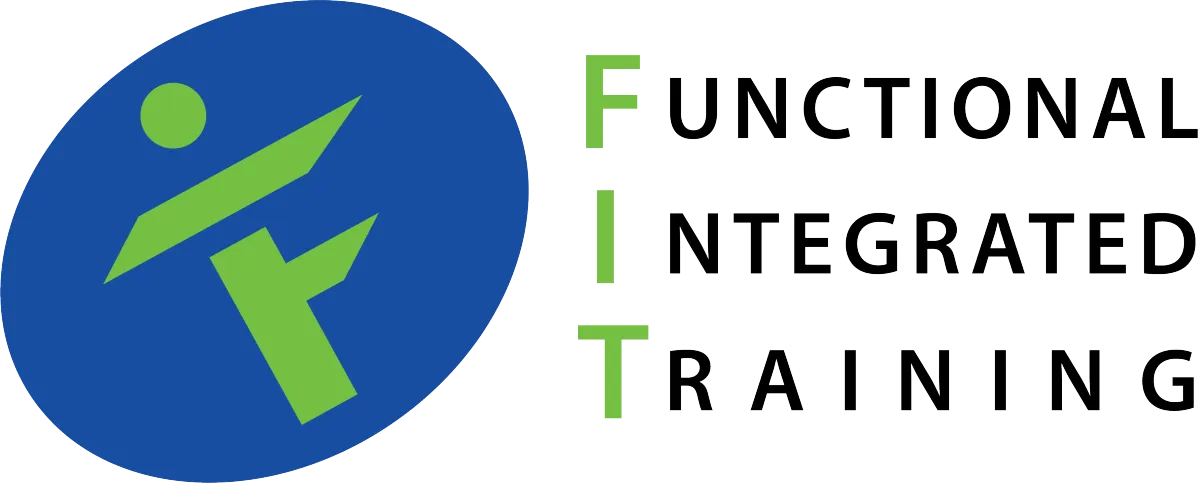STRENGTH TRAINING BLOG

Optimize Your Post-Strength Training Recovery Guide
How to Optimize Your Recovery Post-Strength Training: Functional Integrated Training Guide
Optimize your post-strength training recovery with our comprehensive guide from Functional Integrated Training in Fitchburg, WI. Learn about nutrition, sleep, active recovery, and advanced techniques to enhance your performance and stay injury-free. Visit Functional Integrated Training for more info!
Strength training is essential for building muscle and improving overall fitness, but proper recovery is just as crucial. Without adequate recovery, your body can't repair and grow muscle tissue, leading to fatigue, injury, and plateaued progress. This comprehensive guide from Functional Integrated Training in Fitchburg, WI, will help you optimize your recovery post-strength training, ensuring you maximize your gains and stay injury-free.
The Importance of Recovery
What is Recovery?
Recovery is the process through which your body repairs itself after the stress of strength training. It involves various physiological processes, including muscle repair, glycogen replenishment, and the removal of metabolic waste. These processes are critical for restoring your body to a state where it can continue to perform and improve.
Why Recovery Matters
Proper recovery allows your muscles to heal and grow stronger, improves your performance in subsequent workouts, and reduces the risk of injury. When you engage in strength training, your muscle fibers sustain microscopic tears. Recovery is when these tears are repaired, making your muscles stronger and more resilient. Ignoring recovery can lead to overtraining, which can have serious consequences for your health and fitness goals. Overtraining can result in decreased performance, chronic fatigue, increased injury risk, and even psychological burnout.
Key Components of Effective Recovery
Nutrition
Nutrition plays a pivotal role in recovery. Consuming the right nutrients at the right times can significantly enhance your recovery process. Your diet provides the building blocks your body needs to repair and grow muscle tissue, replenish energy stores, and support overall health.
1. Protein Intake
Aim for 20-30 grams of protein post-workout to support muscle repair and growth. Protein provides the amino acids necessary for repairing muscle tissue damaged during strength training.
Include sources like lean meats, dairy, and plant-based options like beans and tofu. Variety in protein sources ensures you get a complete range of amino acids essential for muscle recovery.
2. Carbohydrates
Carbohydrates help replenish glycogen stores depleted during exercise. Glycogen is the primary energy source for your muscles during high-intensity workouts.
Opt for complex carbs such as whole grains, fruits, and vegetables. These provide a sustained release of energy, helping to keep your blood sugar levels stable and supporting long-term recovery.
3. Hydration
Stay hydrated by drinking plenty of water before, during, and after your workout. Dehydration can impair muscle function and recovery, so maintaining proper hydration is essential.
Consider electrolyte drinks if you sweat excessively. Electrolytes like sodium, potassium, and magnesium are lost through sweat and need to be replenished to maintain optimal muscle function and hydration levels.
Sleep
Quality sleep is critical for recovery. Aim for 7-9 hours of sleep per night to allow your body to repair and regenerate tissues. During deep sleep, your body releases growth hormone, which is vital for muscle repair and growth.
1. Sleep Hygiene
Maintain a regular sleep schedule by going to bed and waking up at the same time every day, even on weekends. Consistency helps regulate your internal clock and improve the quality of your sleep.
Create a restful environment by keeping your bedroom dark, cool, and quiet. Use blackout curtains, a white noise machine, or earplugs to eliminate disturbances. Avoid electronic devices before bed, as the blue light emitted can interfere with your sleep cycle.
Active Recovery
Incorporate active recovery techniques to keep blood flowing to your muscles and reduce soreness. Active recovery helps to clear metabolic waste from your muscles and brings fresh
oxygen and nutrients to support the healing process.
1. Light Exercise
Engage in low-intensity activities like walking, swimming, or yoga. These activities increase blood flow without placing additional stress on your muscles.
Active recovery can help flush out lactic acid and reduce muscle stiffness. Gentle movements promote circulation and aid in the recovery of damaged tissues.
2. Stretching
Perform gentle stretches to improve flexibility and reduce muscle tension. Stretching helps to maintain and improve your range of motion, which is crucial for preventing injuries.
Focus on areas that feel particularly tight or sore. Spend extra time on these areas to alleviate tension and improve overall muscle function.
Advanced Recovery Techniques
Massage and Foam Rolling
Massage and foam rolling can help release muscle tightness and improve circulation. These techniques target the fascia, the connective tissue surrounding your muscles, to reduce adhesions and promote better movement.
1. Self-Myofascial Release
Use a foam roller to target specific muscle groups. Foam rolling can help break up knots and tightness in your muscles.
Apply gentle pressure and roll slowly over tight areas. Spend extra time on particularly sore spots, but avoid rolling directly over joints or bones.
2. Professional Massage
Consider scheduling regular massages with a professional therapist. A trained therapist can provide deeper and more targeted muscle relief.
Deep tissue massage can help alleviate muscle knots and improve recovery. It promotes better circulation, reduces inflammation, and helps to relieve stress and tension.
Cryotherapy and Heat Therapy
Alternating between cold and heat therapy can reduce inflammation and promote healing. These therapies can be used individually or in combination to enhance recovery
1. Ice Baths
Take ice baths or use ice packs on sore muscles. Cold therapy can help reduce inflammation, numb pain, and accelerate the recovery of damaged tissues.
Limit ice baths to 10-15 minutes to avoid excessive cold exposure. Use ice packs for shorter durations, around 15-20 minutes, on specific areas.
2. Heat Therapy
Use heating pads or warm baths to relax muscles and improve blood flow. Heat therapy helps to increase the elasticity of muscle tissues and reduce stiffness.
Heat therapy is particularly effective for chronic muscle pain and stiffness. Apply heat for 15-20 minutes to the affected areas, ensuring it is not too hot to avoid burns.
Mental Recovery
Mental recovery is just as important as physical recovery. Stress management techniques can enhance your overall well-being and improve your training results. Mental stress can negatively impact your body's ability to recover, so it's important to take steps to manage it effectively.
1. Mindfulness and Meditation
Practice mindfulness and meditation to reduce stress and improve mental clarity. These practices can help you stay focused and positive, which is important for maintaining a consistent training routine.
Even a few minutes of daily meditation can make a significant difference. Use guided meditation apps or practice deep breathing exercises to help calm your mind.
2. Relaxation Techniques
Engage in activities that help you relax, such as reading, listening to music, or spending time in nature. Find activities that you enjoy and make time for them regularly.
Prioritize self-care and make time for activities you enjoy. Taking breaks and allowing yourself to unwind can improve your mental and emotional well-being.
Putting It All Together: A Sample Recovery Plan
Here’s a sample recovery plan to help you incorporate these techniques into your routine:
1. Post-Workout Nutrition
Consume a balanced meal with protein and carbohydrates within 30 minutes of finishing your workout. This helps kickstart the recovery process and replenish depleted energy stores.
Stay hydrated throughout the day by drinking water consistently. Monitor your urine color to ensure you're staying adequately hydrated; it should be light yellow
2. Active Recovery
Engage in light exercise or stretching for 15-30 minutes on non-training days. This can help reduce muscle stiffness and keep your body limber.
Use a foam roller for self-myofascial release as needed. Focus on areas that feel particularly tight or sore to promote better muscle function.
3. Sleep
Establish a consistent sleep routine and aim for 7-9 hours of sleep per night. Prioritize your sleep as a crucial part of your recovery regimen.
Create a calming bedtime ritual to improve sleep quality. Avoid stimulants like caffeine and electronic devices before bed, and consider activities like reading or gentle stretching.
4. Advanced Techniques
Schedule regular massages and incorporate cryotherapy or heat therapy as needed. These treatments can help address specific recovery needs and enhance overall muscle health.
Practice mindfulness or meditation daily to support mental recovery. Even a few minutes of focused breathing or guided meditation can significantly reduce stress levels.
Conclusion
Optimizing your recovery is essential for maximizing the benefits of your strength training regimen. By focusing on nutrition, sleep, active recovery, advanced techniques, and mental well-being, you can enhance your performance, reduce the risk of injury, and achieve your fitness goals. For more personalized guidance and support, contact Functional Integrated Training in Fitchburg, WI.
If you want to have this stuff taken care of and not worry about doing it yourself, use Functional Integrated Training to make your life easy. Click the "Request More Information" button to get started today!





